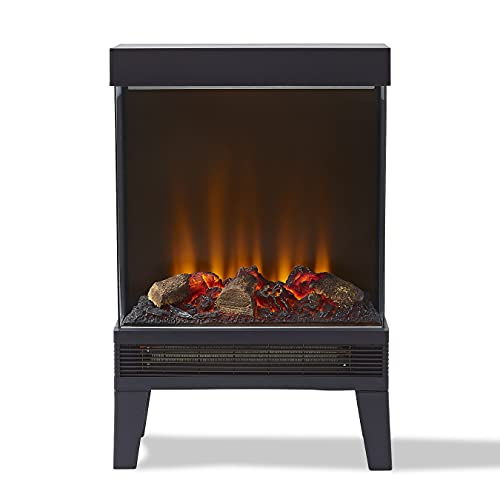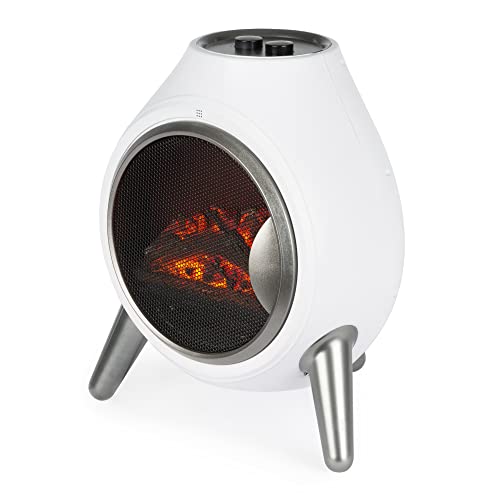Why No One Cares About Wood Burner Fireplace
How to Get the Most From a Wood Burner Fireplace

Wood stoves, unlike traditional open fireplaces, are engineered to use wood for combustion. This allows them meet the stricter emission requirements.
Wood burning stoves emit dancing yellow flames and cosy crackling noises. They also provide warmth and a warm sensation. The smoke produced is contaminated by air pollutants such as formaldehyde, benzene, and polycyclic aromatic hydrocarbons.
Efficient
Fireplaces and stoves that burn wood provide beautiful and natural heat to your home, and they are incredibly efficient. A top-quality wood stove can be eco-friendly up to 77 percent. It is crucial to get the most value of your log burner, especially with increasing energy costs. The good news is it's easier than ever to do!
The amount of moisture in firewood is a key factor that determines how efficient a wood-burning stove is. We recommend using only seasoned wood that has been dried for at least one year and often two years. The more dry the wood is more dry, the better it burns. This results in less smoke and less harmful emissions.
Another benefit of a wood-burning stove is that it's a low carbon source of fuel, which is excellent for the environment. When you purchase locally-sourced wood, you also help to support the active management and conservation of forests. This is great for wildlife.
The only thing a wood burning stove needs in terms of maintenance is to take away and get rid of ash. It's somewhat of a hassle, but it is worth it to get the best heat from each log. If you wait for the ashes to cool completely, they can also be used as a non-toxic, green melting ice. They can be used to polish jewelry and absorb smells.
A wood burner fireplace is a truly timeless classic. Although they're not as popular than gas fireplaces but there's no denying the beauty and allure of a roaring fire. They are ideal to cuddle to on cold winter nights, and they make a warm and inviting space in your home. Invest in a quality wood burner and you'll be reaping the benefits for many years to be! Our expert chimney sweeps are here to help you get the most out of your stove. Give us a call now to find out more.
Low Carbon
Wood burners that are clean and efficient are one of the best ways to save money on logs and keep your home warm. They also help local woodland management. This is a fantastic way to support wildlife in your local area.
Wood-burning
fireplaces and stoves create very little pollution if they are properly maintained and are used with dry, seasoned firewood. If they aren't properly maintained or when they make use of wood that is not of high quality, the smoke that is produced contains fine particles commonly referred to as particulate pollution that can cause irritation to the lungs and other body organs. Carbon monoxide, air pollutants that are toxic such as formaldehyde and benzene, and polycyclic aromatic hydrocarbons are also present. Inhaling this type of air pollution could cause irritation to the lung, coughing, wheezing and asthma attacks. It could even cause serious health conditions such as heart disease, cancer, or premature death.
Some people are worried that wood-burning stoves will contribute to climate change However, this isn't true. Burning wood is a carbon neutral energy source. The tree absorbs carbon dioxide throughout its lifespan. When burned the carbon dioxide is released into the atmosphere.
The wood is sourced locally, which reduces the amount of pollution emitted in the transportation process. It is also important to use high quality well-seasoned hardwoods, as they will have an extended and even burn than softwoods.
Modern, EPA certified wood stoves and heaters (such as those made by Charlton & Jenrick) have significantly lower emissions than older stoves. They have been tested and certified to meet 2020 EPA standards which are considerably more stringent than previous emissions limits.
All wood burning stoves must be fully vented to the outside of your home to ensure that they do not cause a build-up of exhaust inside your home. By keeping flames above the logs and making sure you make use of dry, seasoned wood, all of our current clean burn and DEFRA exempt stoves produce very clear exhaust and have particulate levels that are 60 or more lower than the DEFRA limit.
A wood-burning stove equipped with a catalytic converter is the most efficient low carbon heating solution. These units re-ignite the gasses and particulates from the initial combustion at a later stage by mixing them with superheated air. They then funnel the remaining particulates and gasses through a catalytic combustion combustor for a third and final combustion, further reducing emissions to a level that is well below the government standards.
Clean Burn
Cleanburn wood stoves are engineered to burn fuel with the highest efficiency possible. This means that there are fewer emissions of particles into the air when burning wood. The stove's air management system controls the intake and exhausting of gases, ensuring the combustion process takes place in a closed, controlled atmosphere. It also regulates the flame height to reduce emissions and maximize heat output.
This means your chimney and the surrounding area will be cleaner than older stoves. Particulate matter (also called particle pollution) caused by incomplete combustion of wood can cause respiratory problems like wheezing and coughing in people and contributes to the development of heart disease such as stroke, diabetes, and other serious health conditions. Wood burning can also contribute to poor air quality in cities.
The smoke that is emitted from poorly combusted wood contains fine particulate pollution as well as hazardous air pollutants, including carbon monoxide volatile organic compounds nitrogen oxides, benzene, formaldehyde and polycyclic aromatic hydrocarbons. These particles can be absorbed into the lungs, and other organs, causing discomfort and damage and even death. Airborne dust can also contaminate the surfaces of your home, and can give the impression of a rough surface to rooms.
It's important to use only good quality, seasoned and dried firewood for your fireplace with a wood burner. Hardwoods like oak beech, ash and are the most efficient for heating. Hardwoods are extremely dense and have higher BTU than softwoods. They also have more heat.
Contact your local authority to find out whether they have any regulations regarding wood burning. They could include rules for nuisance or odor and visible emissions or smoke opacity limits.
It is important to keep the glass of a wood stove that has an open front that is free of dirt and deposits. You can use a dry cloth or oven cleaner spray to accomplish this. You can also add bicarbonate soda and water to the glass.
Regular maintenance of your stove and chimney is also vital. Regular chimney cleaning is required to remove creosote, and to ensure that the flue is operating properly. Be sure to note dates for inspections on a regular basis in your calendar, since this will help you avoid costly repairs and prolong the lifespan of your wood stove.
Low Maintenance
Wood burning fireplaces are very popular because they offer natural warmth. This type of fireplace requires some maintenance and upkeep. The chimney, flue and stove are all potential sources of house fires, if they're not cleaned and maintained regularly. Fireplaces can also provide heat in the event of power outage, especially during winter storms when tree branches can fall and power lines can be ripped down.
Using a wood stove for heating will reduce your carbon footprint substantially when compared to other fossil fuel sources, such as gas. Modern wood stoves, inserts, and fireplaces are built to conform to EPA standards (Environmental Protection Agency), which means they emit very little carbon dioxide. The more seasoned the wood is and the better it is, the more efficient it will be and you'll use less of it to produce the same amount of heat.
These fireplaces require some maintenance and care, including ensuring they are not in close proximity to the ignition source and that a screen is in place. Cleaning the grate of ash and debris will allow airflow and will stop the fire from dying too quickly and keep your home clean. It is important to have your chimney and stove swept at least twice per year to prevent creosote accumulation, which can cause a fire hazard or clog and limit the airflow.
It could take a while for homeowners who are new to the area to learn to ignite, light and maintain a constant fire in the fireplace. Once you've mastered the art of building and maintaining a fire in your wood stove, it can be a source of lasting enjoyment that provides warmth and warmth to your home all year long.
Wood burning fireplaces have been around in some form or another for over 500 years. They've gained a lot of attention because of their efficiency, sustainability and the natural warmth of real wood. Talk to your local Regency dealer about the benefits of wood stoves or inserts for your home if you're planning to buy an entirely new heater.

 Wood stoves, unlike traditional open fireplaces, are engineered to use wood for combustion. This allows them meet the stricter emission requirements.
Wood stoves, unlike traditional open fireplaces, are engineered to use wood for combustion. This allows them meet the stricter emission requirements.